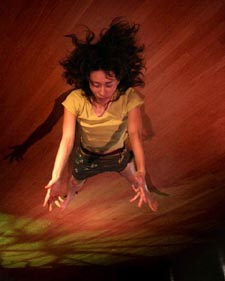The Varied Performances of the 2012 “Mix Festival”

Nami%20Yamamoto%20Photo%20by%20Julien%20Jourdes.jpg
By Carrie Stern
New Dance Alliance’s annual Performance Mix Festival, now in its 26th year, comes with a warning label: Attend at your own risk.
I’m joking, of course, but the festival is known for presenting cutting-edge, no-holds-barred work, commonly with sexual content. It is remarkable, in a city where tiny cultural institutions come and go, that such a risk-taking organization has lasted this long.